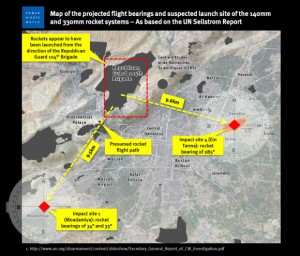Another Dangerous Rush to Judgment in Syria – Consortiumnews
I
don't know whether the Syrian regime is responsible for the chemical
attack reported in northern Syria this week. But then nor does anyone
else. That has not stopped them accusing Bashar Assad of being personally responsible.
Investigative reporter Robert Parry does a good job here of unmasking
the problem with the coverage so far: "A serious investigation
ascertains the facts and then reaches a conclusion, not the other way
around."
The corporate media definitely aren't doing that in this
case. In fact, they are doing the exact opposite. Parry points out that
the New York Times has assigned Michael B Gordon to cover the story.
That's the same discredited reporter who has been repeatedly exposed as a
source of Fake News since his 2002 story – designed to bolster the case
for invading Iraq – about Saddam using aluminium tubes for his
non-existent WMD programme. There can be no doubt whatsoever that Gordon
is a mouthpiece for the Pentagon.
There are just as likely
scenarios that don't implicate Syria for the poison-gas attack, but they
are either being ignored or dismissed out of hand by the corporate
media.
I remember my first editor regularly castigating his
novice reporters: "Never make assumptions!" But the veteran reporters
covering this story are racing to assumptions, and not even necessarily
plausible ones.
As Parry observes, the media's rush to judgment
almost guarantees that we will never get a serious or independent
investigation of the evidence:
"Another problem with the
behavior of the Times and the mainstream media is that by jumping to a
conclusion they pressure other important people to join in the
condemnations and that, in turn, can prejudice the investigation while
also generating a dangerous momentum toward war.
"Once the
political leadership pronounces judgment, it becomes career-threatening
for lower-level officials to disagree with those conclusions. We’ve seen
that already with how United Nations investigators accepted rebel
claims about the Syrian government’s use of chlorine gas, a set of
accusations that the Times and other media now report simply as
flat-fact."

The
controversial map developed by Human Rights Watch and embraced by the
New York Times, supposedly showing the flight paths of two missiles from
the Aug. 21 Sarin attack intersecting at a Syrian military base.
controversial map developed by Human Rights Watch and embraced by the
New York Times, supposedly showing the flight paths of two missiles from
the Aug. 21 Sarin attack intersecting at a Syrian military base.
